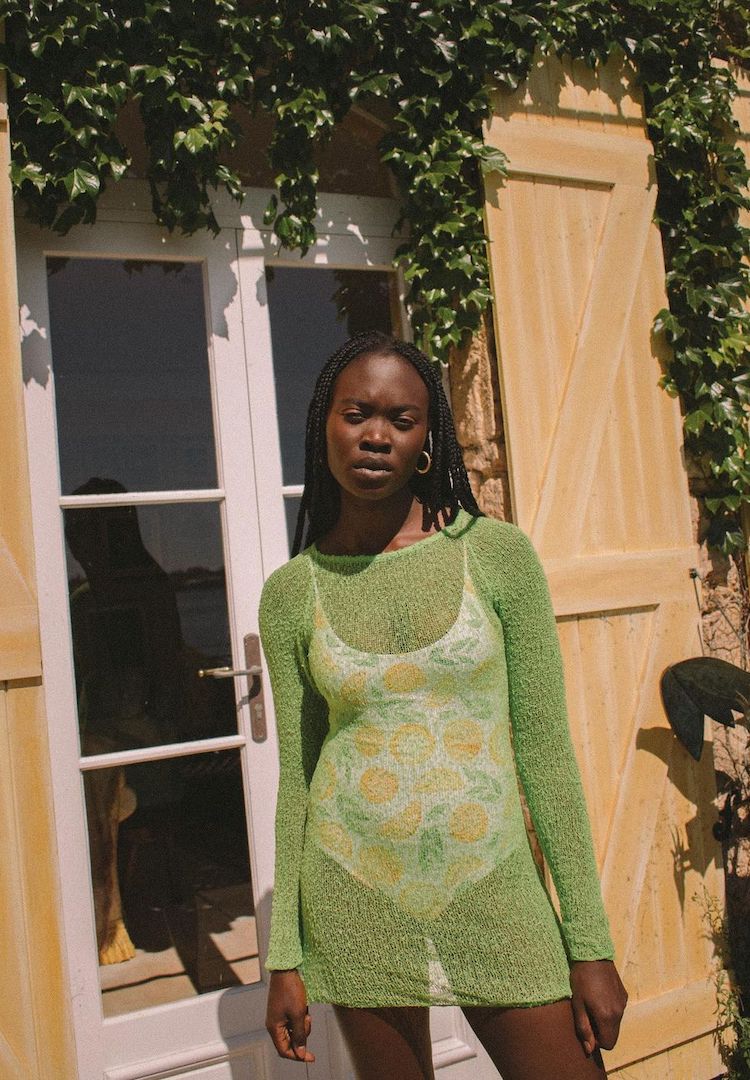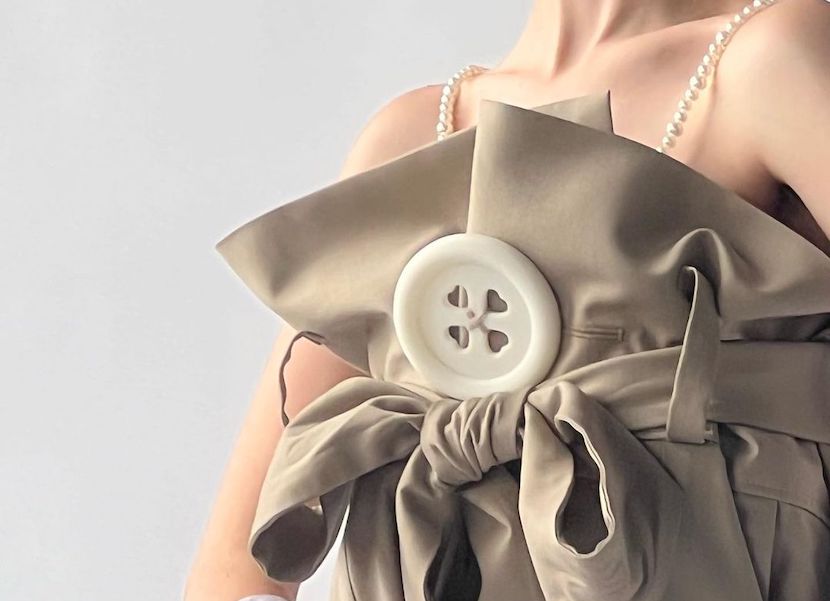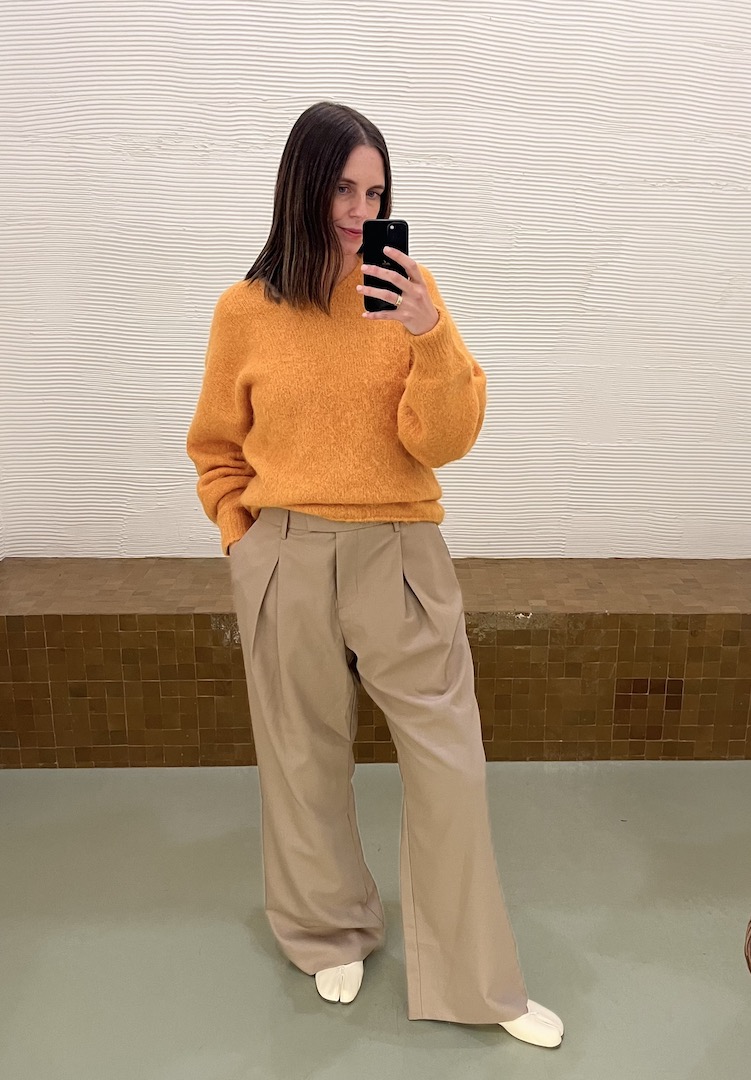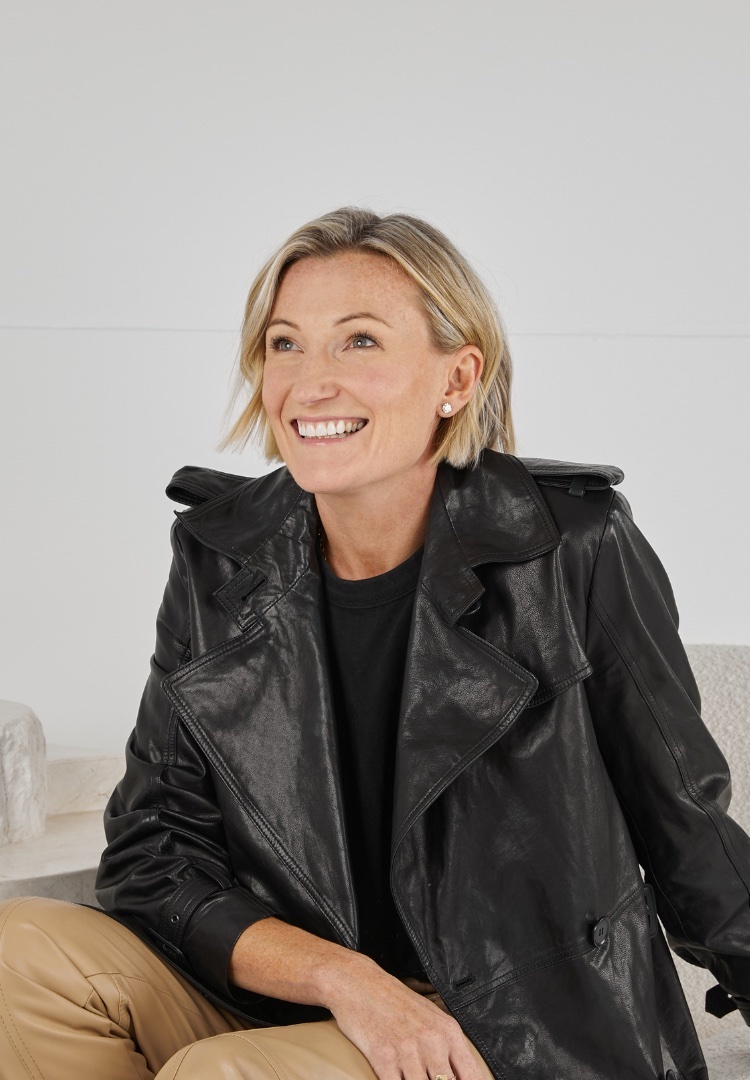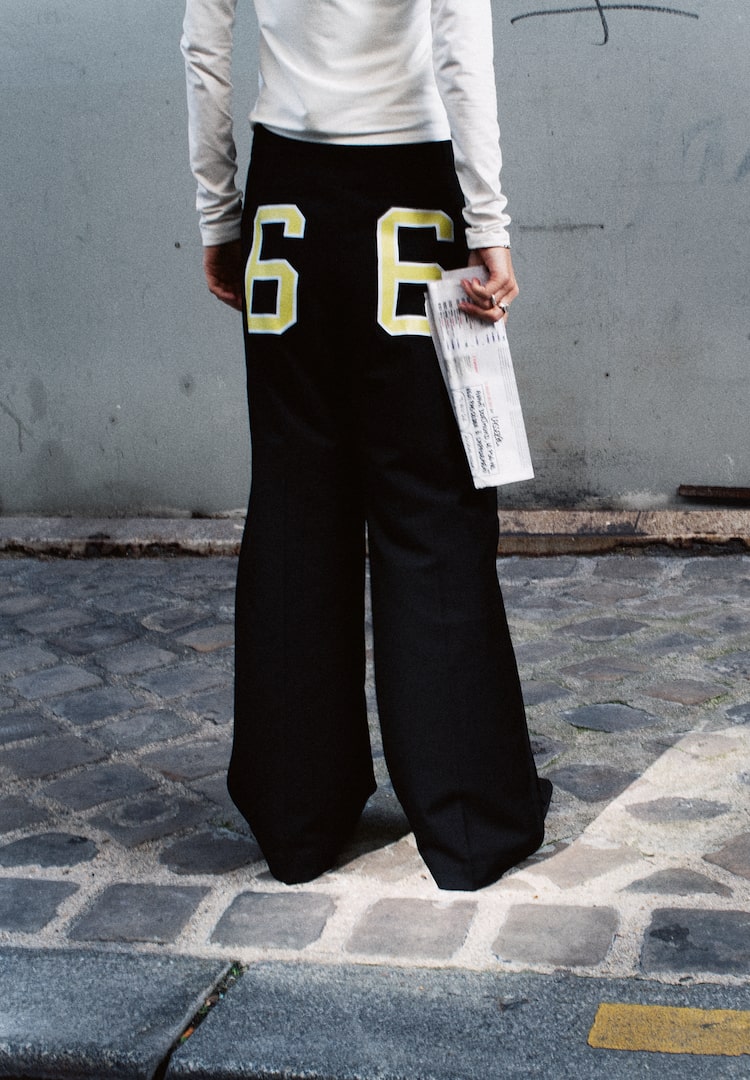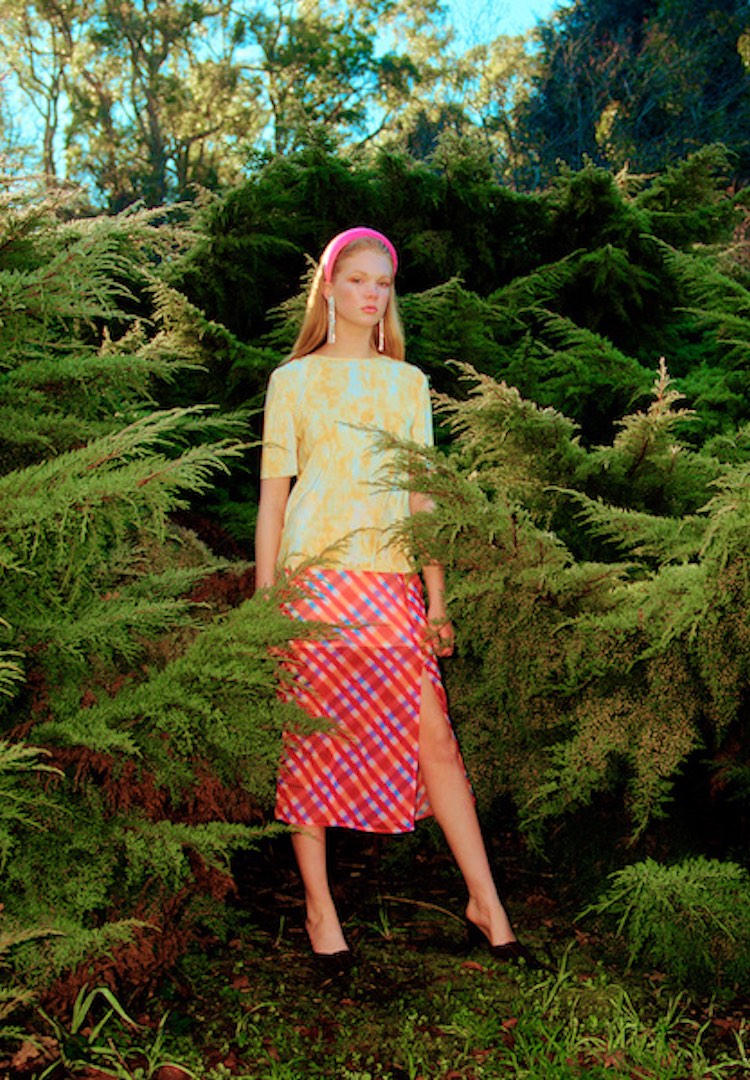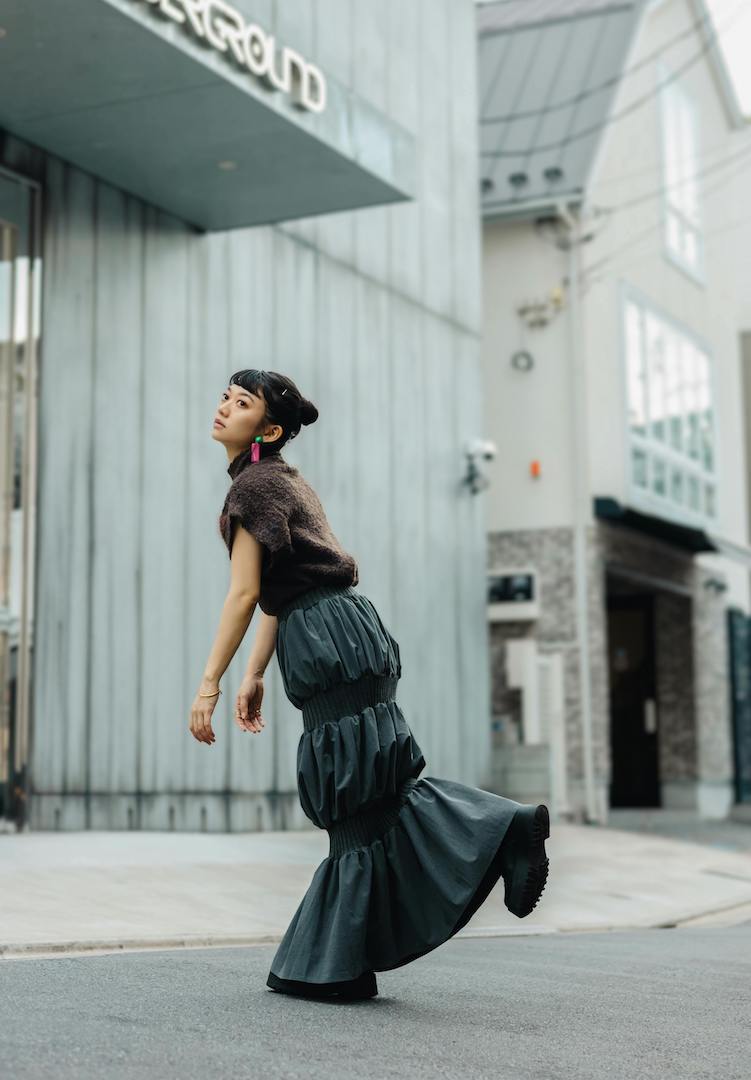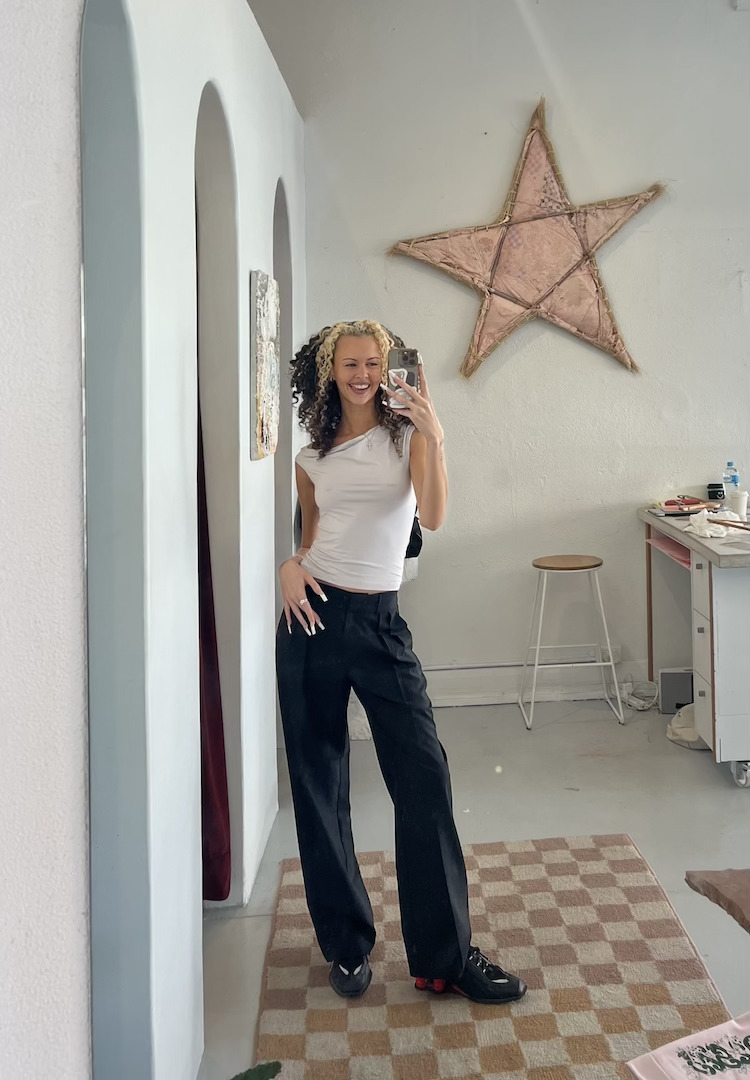Enter the surreal dollhouse world of Melbourne designer Ada Fong
PHOTOGRAPHY BY Christina Yang FOR ADA FONG
WORDS BY IZZY WIGHT
“The hybrid image of human and doll identity.”
Designer Ada Fong moved to Australia from Macao seven years ago to pursue her fashion dream. Almost a decade on and her collection, Miniaturise, has won her a top spot in PayPal Melbourne Fashion Festival’s National Graduate Showcase. Handpicked from a pool of students from across Australia, Ada’s work is recognised for its playful spirit, experimental proportions and innovative production methods.
Ada became fascinated with ball-jointed dolls over her time in the COVID lockdown. “Dolls are dressed in miniature clothing to mimic humans,” she explains. In her collection, Miniaturise, Ada did the exact opposite, “scaling up the standard clothing size and experimenting with different proportions on the body”. With its oversized buttons and bows, dainty gingham and soft ruffles, Ada’s designs evoke feelings of nostalgia and childlike wonder.
Looking for more fashion news and features? Head to our Fashion section.
As an official media partner of Paypal Melbourne Fashion Festival, Fashion Journal is excited to once again be supporting the National Graduate Showcase, celebrating Australia’s top-ranked emerging fashion design talent. The top 10 leading graduates from across the country will exhibit their collections in a boundary-pushing presentation, showcasing experimental design and innovation. Over the next few weeks, we’ll be profiling each designer through a series of interviews. First up is Ada Fong.
Please introduce yourself to our readers.
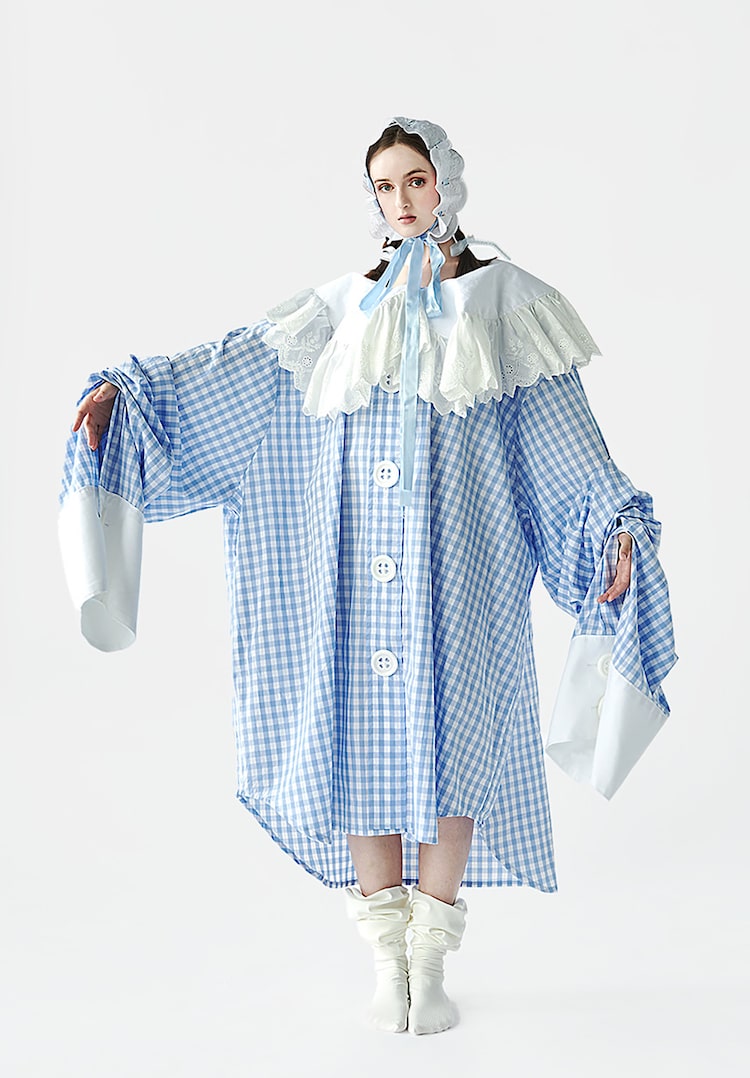
Hi, I am Ada. I recently graduated from the Royal Melbourne Institute of Technology, [studying] Fashion Design. I came to Australia seven years ago from the small city of Macao to pursue my fashion dream. I am fond of aesthetic minimalism and sentiments, using fashion as a medium to express feelings.
Tell us about your collection.
Miniaturise is a project imaging humans as ball-jointed dolls [and] experimenting with the way of dressing and packaging… to bring in [the] comfort that people find in dolls. They project their inner self onto dolls to comfort themselves, releasing stress and restrictions from reality… they get a sense of success [and] accomplishment after roleplaying and dressing the dolls. The wearables generate the hybrid image of human and doll identity, allowing imaginary participation in reality and fantasy.
When did you know you wanted to get into fashion and textile design?
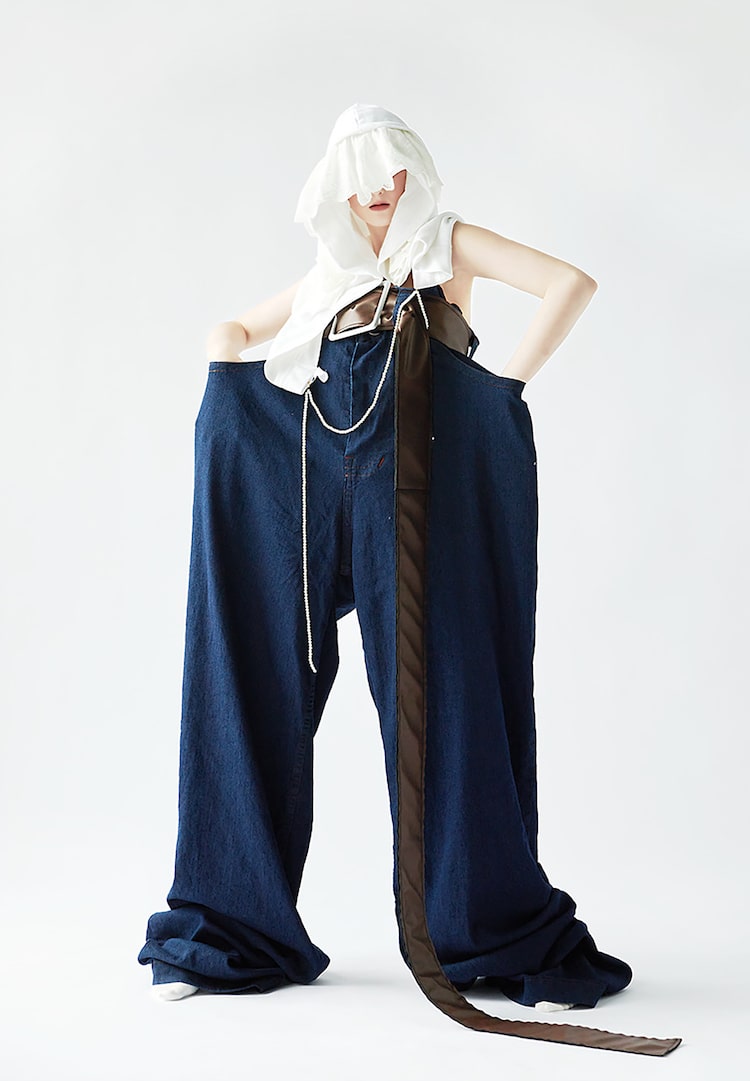
I love… handcrafting and, of course, fashion. When I was in primary [school], I saw a program interviewing fashion students from Central Saint Martins. They were so happy and fashionable with cool outfits… I wanted to be one of them.
What were the major points of inspiration for your collection, and you more broadly as a designer?
My inspirations mostly come from the feelings and emotions I have towards various objects and situations. I want to share my views and ideas with others. They… [might not] have the same thinking, but it is interesting to see how others react to and think about my work.
Tell us about the experience of putting together your graduate collection.
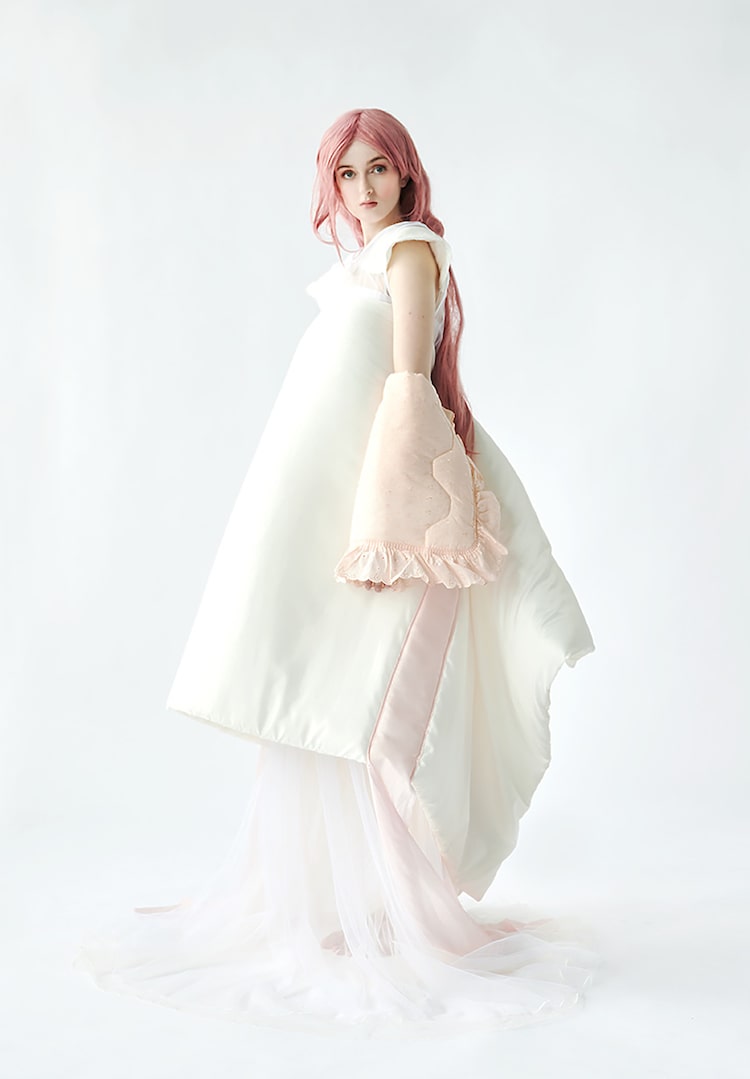
It was really difficult at first. I did the first semester online, took a year off and come back to do another semester. My experience is different to other students who continuously did their courses in Australia. I felt anxious and restless because I was afraid of not being able to keep up with my cohort.
Time is always tight. I was stuck figuring out how to present the concept until a month before the deadline. I needed to travel around the suburbs to do material sourcing… and testing. It is also a struggle to realise the vision with limited skills.
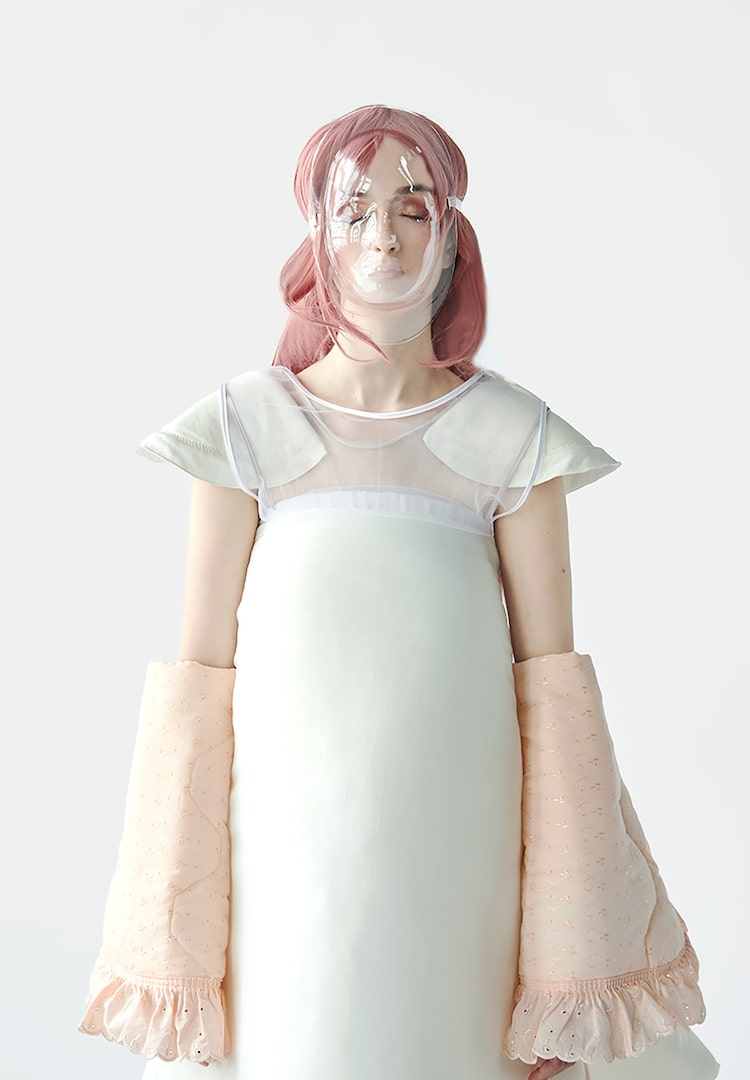
What part does sustainability play in your design practice? And other ethical considerations?
The word sustainability has been overused in the fashion industry. It has become a gimmick for brands to attract customers. I feel like it is much more than using organic or recycled materials. [Sustainability is] consideration in… construction and quality, [making garments] to last for a few decades.
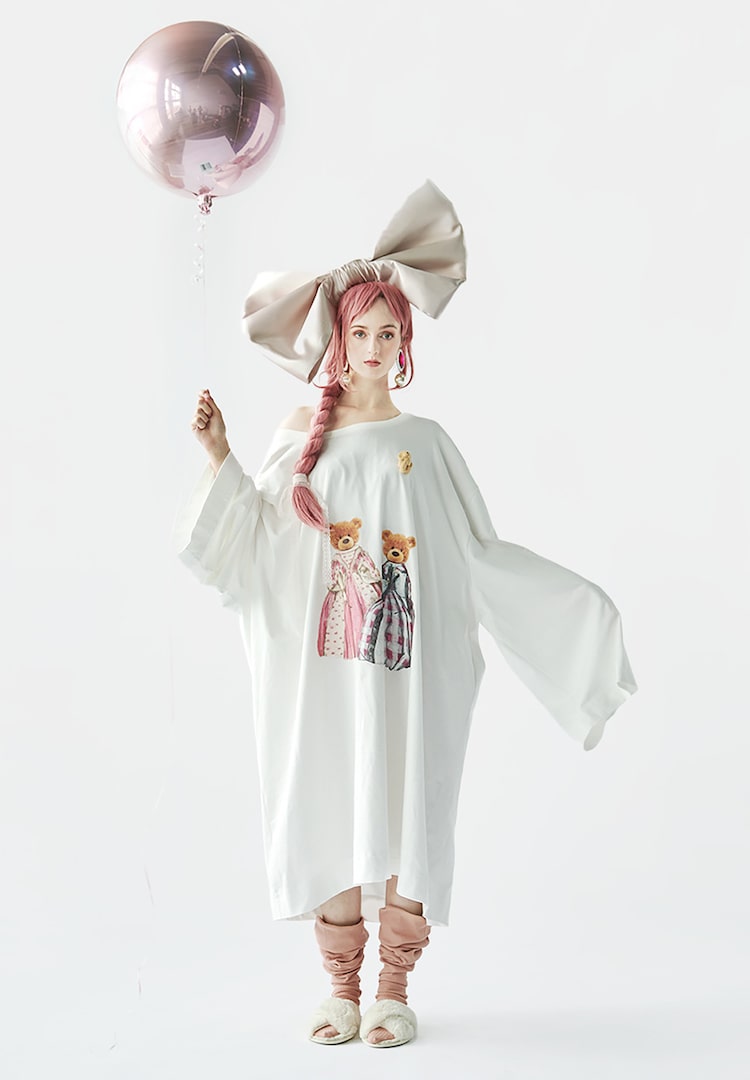
Can you tell us about the inspirations behind Miniaturise?
I found my interest in ball-jointed dolls when I was in COVID lockdown and wanted to bring it to the academic context… dolls are dressed in miniature clothing to mimic humans. I did the opposite, scaling up the standard clothing size and experimenting with different proportions on the body. It’s how humans would look if they were dolls.
The project has taken references from doll packaging and clothing in silhouette, garment type and the way of dressing to make the wearer [appear] doll-like. I hope the playfulness and performance of the project can give the audience comfort and relief from tensions… to remind them to be brave [and] continue to dream, to be a child at heart.
How has 3D printing been used in your designs?
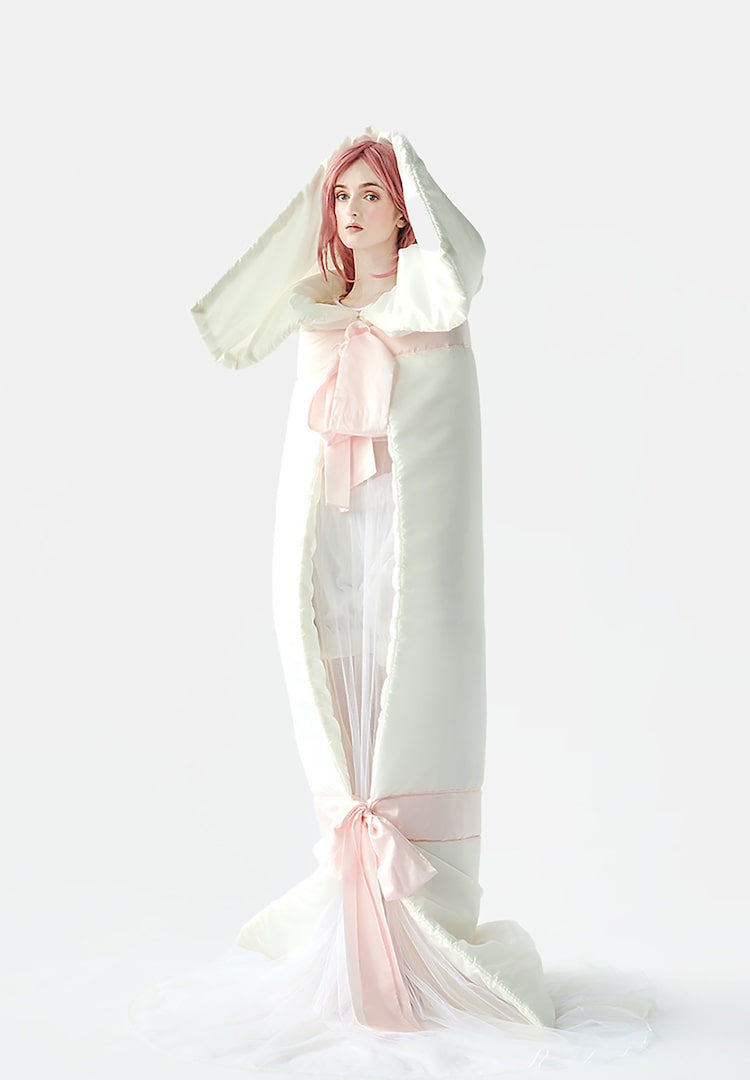
I could not find the ideal buttons and buckles for my designs, so I collaborated with [my friend] Dante to make my imagination come true. He built the 3D file with the measurements and requirements that I gave to him. The 3D-printed buttons and buckles [help the wearer imagine] being miniaturised and show the garments are being upscaled. I have also used 3D printing to make the mould for vacuum-forming the mask.
Dream Australian collaborators?
Some of Ada’s responses have been edited for clarity. To view more of the designer’s work, head here.



